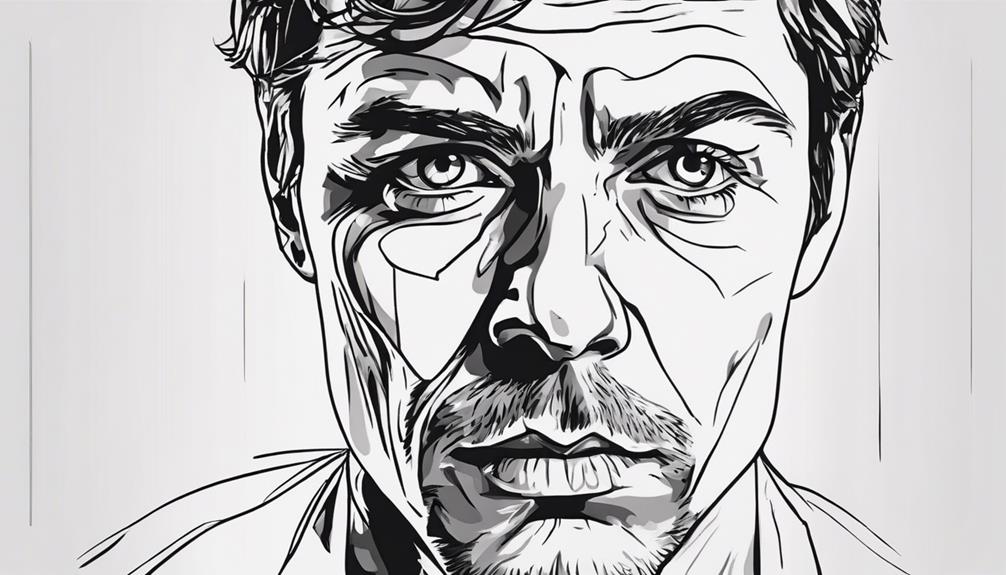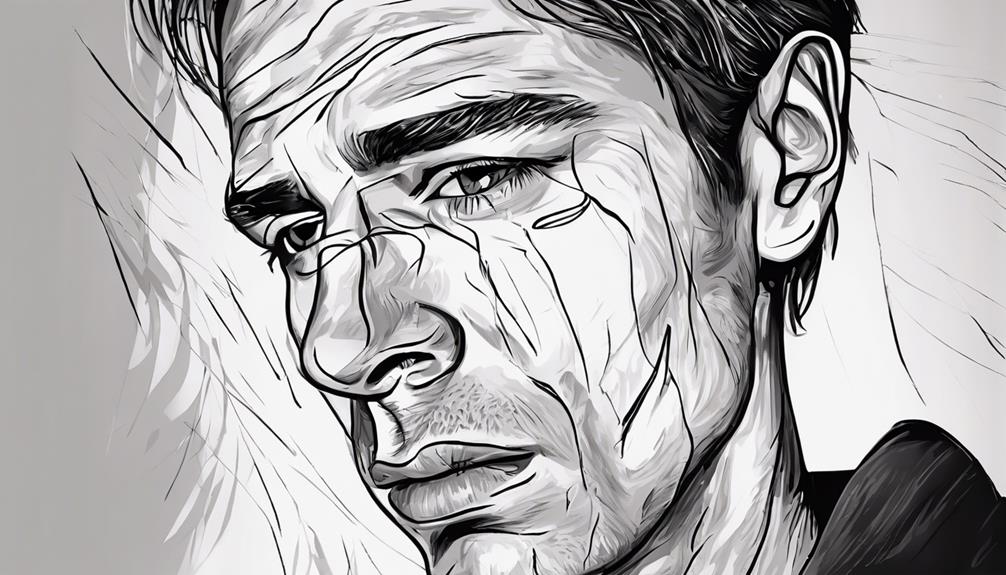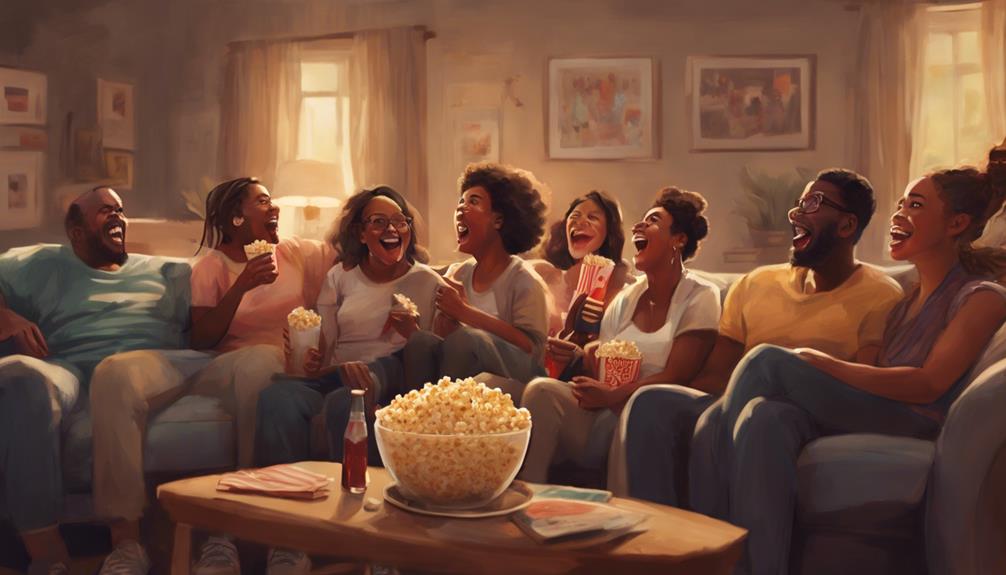In the realm of cinema, the question of what makes a movie good is a complex and multifaceted inquiry that demands careful scrutiny. Various components come into play, ranging from the intricacies of storytelling and character development to the technical prowess and emotional resonance that a film elicits. The interplay of these elements forms the backbone of cinematic excellence, but what truly elevates a movie from mere entertainment to a profound work of art lies in the nuanced blend of creativity and execution. However, the elusive nature of this alchemy remains a subject of perpetual fascination and debate among filmmakers and audiences alike.
Key Takeaways
- Captivating story and well-developed characters are crucial.
- Emotional depth and audience connections drive engagement.
- Talented actors and high-quality production enhance authenticity.
- Impactful storytelling, character development, and production quality determine a movie's success.
Elements of a Good Movie

In exploring the components that contribute to a film's quality, an analysis of the fundamental elements of a good movie is essential for understanding its impact on viewers. Films rely heavily on a captivating story to draw in the audience and maintain their engagement. A well-crafted narrative not only entertains but also leaves a lasting impression on viewers. Alongside the story, character development plays a crucial role in creating emotional resonance and depth within the film. When characters are well-developed, the audience can connect with them on a more profound level, enhancing their overall viewing experience.
Furthermore, the talent of actors and directors is instrumental in bringing the characters to life. Skilled performances breathe authenticity into the roles, making the story more convincing and compelling. Additionally, high-quality production, encompassing visuals and sound design, elevates the film's impact on the audience by immersing them in the cinematic world. Lastly, maintaining good pacing throughout the movie is essential to sustaining audience engagement and interest, ensuring a satisfying viewing experience.
Crafting a Compelling Story
Crafting a compelling story is the cornerstone of a great movie, captivating audiences and holding their interest throughout the film. When creating an engaging narrative, filmmakers should consider the following:
- Twists and Turns: Incorporating unexpected plot developments keeps the audience on the edge of their seats, enhancing their emotional investment in the story.
- Human Experience: A well-crafted storyline that delves into universal themes such as love, loss, or redemption can resonate deeply with viewers, tapping into their own emotions and experiences.
- Audience Engagement: Building a narrative that allows the audience to connect with the characters and events on screen is essential for maintaining their interest and investment in the film.
Developing Strong Characters

Strong characters in movies play a crucial role in driving the narrative forward and engaging audiences emotionally. The depth of a character's motivations, flaws, and growth throughout the story is essential for creating connections with viewers. Furthermore, the impact of well-developed characters on the storyline can determine the success and lasting impression of a movie.
Character Depth Importance
Developing characters with multifaceted personalities and intricate backstories is fundamental in elevating the cinematic experience and fostering audience engagement. Characters with well-developed backgrounds, motivations, and arcs enhance the overall storytelling. Their flaws, strengths, and complexities add depth and authenticity to the narrative, making them relatable to the audience. Memorable characters not only drive the emotional resonance of the film but also connect with viewers on a deeper level. The evolution and growth of characters throughout the story contribute significantly to the film's impact and audience engagement, creating a more immersive and impactful viewing experience.
- Characters with intricate backstories evoke empathy and understanding.
- Well-developed motivations add layers of depth to the narrative.
- Complexities in characters create a sense of realism and intrigue.
Emotional Connections Developed
In the realm of cinematic storytelling, the establishment of emotional connections between viewers and characters serves as a pivotal element in fostering audience engagement and investment in the narrative. Strong characters with depth, relatable flaws, and internal conflicts play a crucial role in creating these connections. Memorable characters, with their authentic portrayals and unique quirks, leave a lasting impact on audiences, making them essential components of great movies. Character development, including arcs, growth, and struggles, not only adds layers of complexity to the storyline but also enhances the audience's emotional investment. Well-developed protagonists and antagonists contribute to the overall depth of the narrative, offering audiences a more profound and meaningful viewing experience. Authentic portrayals by talented actors further solidify these emotional connections, making the characters believable and engaging.
Impact on Storyline
One crucial aspect of crafting a compelling storyline in cinema is the meticulous development of characters that possess relatable flaws, strengths, quirks, and ambitions. Strong character development not only creates relatable and memorable characters that drive the storyline forward but also adds depth and complexity to the narrative. To evoke emotion in the audience, consider the following:
- Characters with internal conflicts and personal growth become more engaging and authentic.
- Villains provide essential counterpoints to heroes, introducing conflict and moral dilemmas that elevate the plot.
- Well-rounded characters, whether heroes or villains, contribute significantly to the emotional resonance and success of the movie.
The Power of Talented Actors

Talented actors play a pivotal role in elevating the quality and impact of a movie through their ability to bring depth, emotion, and authenticity to their characters. By infusing their performances with these elements, actors enhance the overall storytelling experience. Their skill in portraying diverse characters convincingly allows them to immerse audiences in the world of the film, creating a powerful connection between the viewer and the story unfolding on screen. The emotional depth that talented actors bring to their roles can evoke a wide range of feelings in the audience, leaving a lasting impression. Furthermore, well-cast actors form strong connections with viewers, drawing them into the narrative and making the film more relatable and engaging. The range and versatility of these actors enable them to take on a variety of roles, enriching the storytelling process and contributing to the success of the movie as a whole.
Importance of High-Quality Production
Elevating the overall cinematic experience, high-quality production in films encompasses various elements such as visuals, sound design, and set design that significantly impact the viewer's immersion and engagement with the narrative. Attention to detail in production contributes to the authenticity and immersive nature of the movie. Well-executed production values elevate the storytelling by creating a visually compelling and cohesive narrative. Successful films often invest in high-quality production to create a polished and engaging cinematic experience.
- The meticulous attention to detail in set design transports audiences to different worlds, enhancing the overall viewing experience.
- High-quality sound design can evoke emotions, creating a deeper connection between the audience and the story unfolding on screen.
- Visually stunning visuals not only captivate the audience but also enhance the storytelling by providing a rich visual narrative that complements the plot.
Creating Emotional Impact

Creating emotional impact in movies relies heavily on the synergy between well-crafted character development, music and sound design, authentic performances, storyline resonance, and skillful cinematography and direction. Great films, therefore, often excel in this aspect, which contributes significantly to their impact and longevity. The thematic idea portrayed in a movie, along with the truth and themes it explores, can deeply resonate with audiences, leaving a lasting impression. Directors play a crucial role in shaping the emotional impact of a film by envisioning how the authentic performances, cohesive story, and visual elements come together to convey their vision effectively. By weaving together messages or ideas that evoke strong emotions, movies can leave a profound impact on viewers. Below is a table highlighting the key elements that contribute to creating emotional impact in films:
| Element | Description | Role in Emotional Impact |
|---|---|---|
| Character Development | Well-crafted arcs and motivations | Connect viewers to story |
| Music and Sound Design | Sets tone, evokes emotions | Enhances scene atmosphere |
| Authentic Performances | Deeply connects viewers to characters | Evokes empathy |
| Storyline Resonance | Well-developed, resonates with audience | Heightens emotional impact |
Frequently Asked Questions
How Do Special Effects and CGI Contribute to the Overall Quality of a Movie?
Special effects and CGI play a pivotal role in enhancing visual storytelling and creating immersive experiences in films. Through digital artistry and creative illusions, filmmakers can leverage technological advancements to deliver realistic simulations and spectacular visuals on screen. These cutting-edge effects enable the presentation of cinematic wonders and virtual realities, elevating the overall quality of a movie by captivating audiences with visually stunning and visually engaging elements.
What Role Does Sound Design Play in Enhancing the Viewer's Experience?
Sound design serves as a pivotal component in cinematic experiences, influencing audience engagement and emotional impact. Through creative collaboration, technical innovation, and artistic expression, sound immersion complements visual storytelling, enhancing atmosphere building and narrative enhancement. By leveraging various auditory elements, sound design contributes to a holistic cinematic experience, underscoring its significance in crafting compelling narratives and fostering audience immersion in the art of filmmaking.
How Do Costume Design and Set Decoration Influence the Mood and Atmosphere of a Film?
Costume design and set decoration are pivotal components in visual storytelling, playing a significant role in mood creation and atmosphere building. Through meticulous attention to detail, production design enhances artistic expression and conveys thematic elements. The careful selection of costumes and set pieces contributes to cinematic aesthetics, aiding in character development. The synergy between costume design and set decoration forms a cohesive visual narrative that immerses viewers in the world of the film.
What Impact Does a Film's Soundtrack or Musical Score Have on Its Emotional Resonance?
The musical score of a film plays a pivotal role in shaping its emotional resonance. Through carefully crafted musical themes, harmonious melodies, and powerful crescendos, composers enhance the cinematic storytelling and create dramatic tension. Instrumental cues are strategically used to evoke melancholic moments or build up to climactic scenes. Atmospheric soundtracks with memorable compositions can deeply impact viewers, heightening the film's emotional impact and leaving a lasting impression.
How Do Marketing and Distribution Strategies Affect the Success of a Movie?
Marketing and distribution strategies significantly impact a movie's success. Budget allocation plays a crucial role in determining the reach and visibility of a film. Understanding the target audience helps tailor promotional efforts effectively. Leveraging online streaming platforms, social media, theatrical releases, film festivals, and international markets can broaden the film's viewership. Merchandising tie-ins, cross-promotions, and awards campaigns further enhance visibility and appeal to audiences, ultimately influencing the movie's success.
Conclusion
In conclusion, a good movie can be likened to a finely crafted timepiece, where each element functions together harmoniously to create a seamless and impactful experience for the viewer. Just as the gears and cogs of a clock work in unison to accurately measure time, the various components of a film, from story to production to acting, must align perfectly to leave a lasting impression on its audience.
